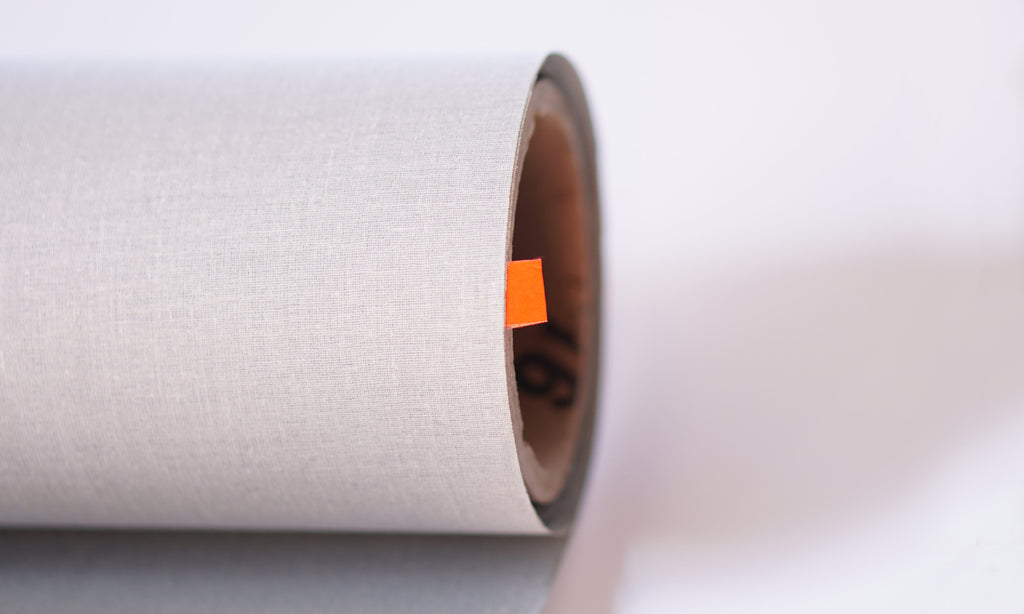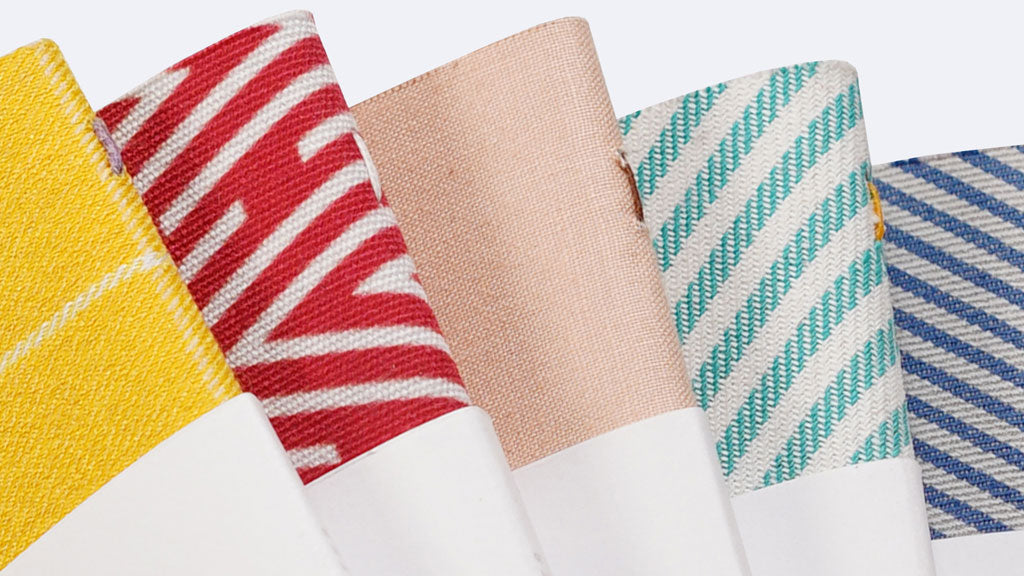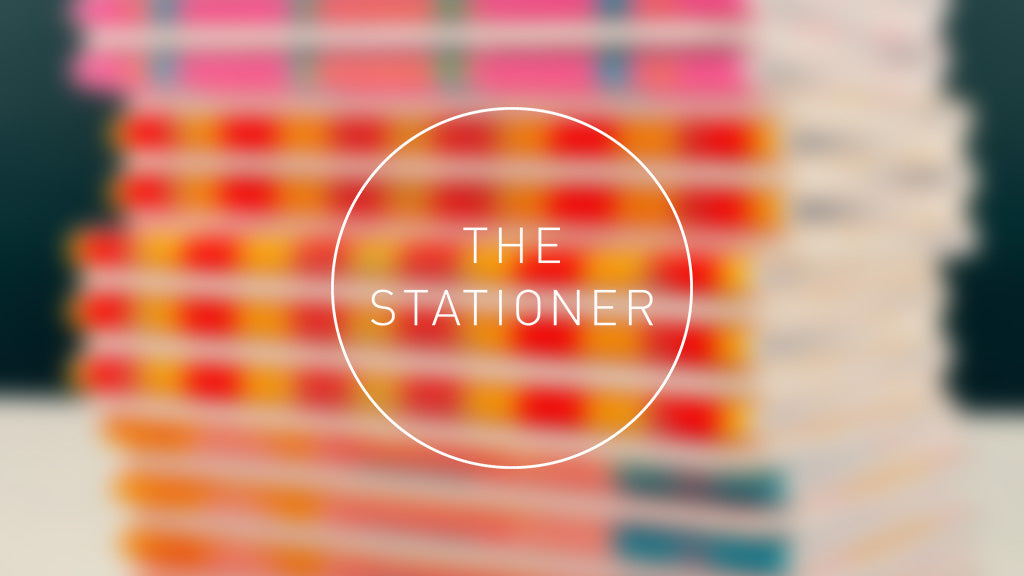Out of all the things that make Dapper Notes special, one feature that stands out above the rest are the fabric covers. If you haven't seen my notebooks in person yet, let me explain:
How Dapper Notes covers are made
When I decided to create a new kind of pocket notebook, I gravitated towards fabric right away. I'd stepped into my local fabric supplier to discover an endless supply of patterns, textures, and colors, and I knew I'd be able to create many special notebooks and never run out of new ideas.
But fabric alone does not make a good cover. Even the heaviest thread count isn't thick enough to create a notebook cover that isn't flimsy. After all fabric is just...fabric. Through trial and error I learned that binding the fabric to a book cloth material not only creates a strong cover, but also gives me an opportunity to add a pop of color.

What is bookcloth?
Traditionally, hard cover books and spines are wrapped with a thin fabric-like material. Look closely at any bound book around you, and you'll notice that the wrapping material on the spine is super thin, but at the same time is really durable and withstands a lot of abuse. Curious what makes book cloth so strong? It's the backing!
Bookcloth is manufactured using strong natural or synthetic fibers with a very tight weave, and has its own backing of either paper or glue. The backing is there for two purposes:
- It creates a strong, un-rippable fabric
- When you bind it to a book, the glue won't seep through

Connecting the two
Creating a new Dapper Notes cover takes a little bit of time, and a lot a bit of experimentation. It's true that my local fabric shop has thousands of options, but not all can be used to make a Dapper Notes cover. The perfect material has to be not too thick (like canvas), not too thin (like silk), and woven well enough so that it doesn't fall apart (like satin).
When I find a material that seems promising in terms of its durability, and has a design or texture that makes me swoon, I create a notebook for myself to carry, use, and test. If the fabric works well and stands up to my daily use abuse, it gets made into the next Dapper Notes edition.
Next, I bind the fabric to bookcloth using archival ph-neutral glue. Once each sheet has been glued, smoothed, pressed, and dried, I cut perfectly-sized covers for one-by-one assembly.

Standing the test of time
If you use pocket notebooks like I do — carrying them in your pocket, bending them, tossing into a bag, and using them every day — you're probably well versed in how they age. Traditional paper cover notebooks, for example, have a tendency to crease, and their covers fall off.
Dapper Notes stand the test of time in their own unique way. Fabric naturally doesn't crease like paper does, and the linen thread binding guarantees a cover that will always stay on. At the same time, fabrics fray, as do the edges of some Dapper Notes editions. The effect will vary greatly by material, but once you use you Dapper Notes for a while, some threads will wiggle their way out.

I intentionally don't seal the edges of Dapper Notes, because I have a fondness for the fraying as a sign of a well-loved notebook. You can, if you prefer, either seal your Dapper Notes ahead of time with this specialty liquid, or snip the longer frays using a small, sharp scissor.
Whichever way you use your Dapper Notes, know that they are made with love and attention, and will last you a long, long time.







